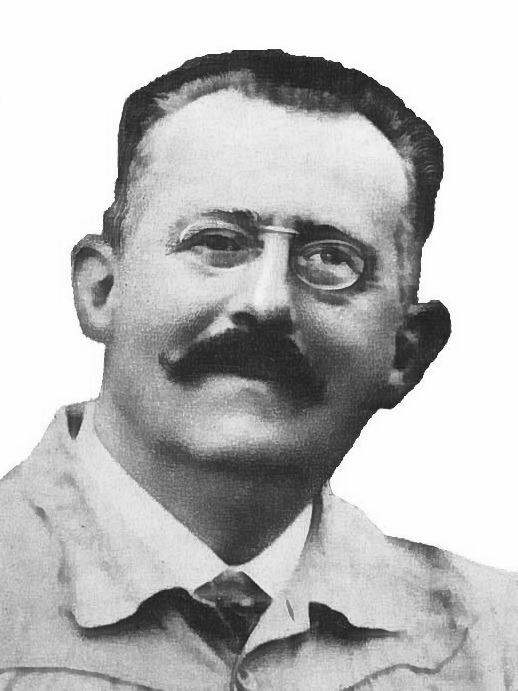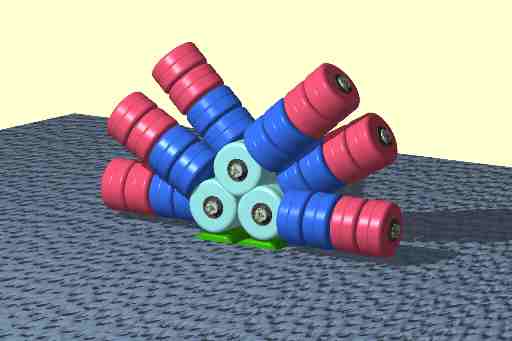|
Bonnemaisonia Hamifera
''Bonnemaisonia hamifera'' is a species of red alga in the family Bonnemaisoniaceae. Originally from the Pacific Ocean, it has been introduced into the northeastern Atlantic Ocean, where it is considered invasive on European coasts. It exists in two phases which, at one time, were thought to be different species; a medium-sized feathery form attached to other seaweeds, and a small tufted form known as ''Trailliella''. Description This algal species exists in two phases. The gametangial phase is always epiphytic, growing on ''Cystoseira'' and other algae. It forms erect, brownish-red, feathery fronds and grows to a length of up to . The fronds are flattened and bear crozier-shaped hooks which cling on to and get tangled with the host seaweed. The tetrasporangial phase forms much-branched, brownish-red tufts of fine filaments growing in small clumps with a width of and resembling cotton wool. They are epiphytic on coralline algae or occasionally grow direct on rock or other hard ... [...More Info...] [...Related Items...] OR: [Wikipedia] [Google] [Baidu] |
Paul Auguste Hariot
Paul Auguste Hariot (1854 – 5 July 1917), the son of Louis Hariot (also a pharmacist), was a French pharmacist and noted phycologist, best known for his 1900 publicatio''Atlas Colorié des Plantes Médicinales Indigènes'' Hariot took up the position of botanical assistant at the ''École Supérieure de Pharmacie'' in the late 1870s during his training in pharmacy in Paris. On qualifying in 1882, his rather quiet and studious life was changed by an invitation to accompany the botanist Émile Bescherelle (1828-1903) on an expedition to Cape Horn aboard the ship ''La Romanche'', a trip during which he amassed a fine collection of algae. On returning to France he studied natural sciences and was awarded a degree in 1888 whereupon he joined the National Museum of Natural History in Paris, working in the cryptogamic herbarium under Professor van Tieghem. Here he worked on classifying specimens that had been gathered by Sébastien Vaillant (1669-1722), and those of the brothers Edmond ... [...More Info...] [...Related Items...] OR: [Wikipedia] [Google] [Baidu] |
Phycoerythrin
Phycoerythrin (PE) is a red protein-pigment complex from the light-harvesting phycobiliprotein family, present in cyanobacteria, red algae and cryptophytes, accessory to the main chlorophyll pigments responsible for photosynthesis.The red pigment is due to the prosthetic group, phycoerythrobilin, which gives phycoerythrin its red color. Like all phycobiliproteins, it is composed of a protein part covalently binding chromophores called phycobilins. In the phycoerythrin family, the most known phycobilins are: phycoerythrobilin, the typical phycoerythrin acceptor chromophore. Phycoerythrobilin is a linear tetrapyrrole molecule found in cyanobacteria, red algae, and cryptomonads. Together with other bilins such as phycocyanobilin it serves as a light-harvesting pigment in the photosynthetic light-harvesting structures of cyanobacteria called phycobilisomes. Phycoerythrins are composed of (αβ) monomers, usually organised in a disk-shaped trimer (αβ)3 or hexamer (αβ)6 (second ... [...More Info...] [...Related Items...] OR: [Wikipedia] [Google] [Baidu] |
Thallus
Thallus (plural: thalli), from Latinized Greek (), meaning "a green shoot" or " twig", is the vegetative tissue of some organisms in diverse groups such as algae, fungi, some liverworts, lichens, and the Myxogastria. Many of these organisms were previously known as the thallophytes, a polyphyletic group of distantly related organisms. An organism or structure resembling a thallus is called thalloid, thallodal, thalliform, thalline, or thallose. A thallus usually names the entire body of a multicellular non-moving organism in which there is no organization of the tissues into organs. Even though thalli do not have organized and distinct parts ( leaves, roots, and stems) as do the vascular plants, they may have analogous structures that resemble their vascular "equivalents". The analogous structures have similar function or macroscopic structure, but different microscopic structure; for example, no thallus has vascular tissue. In exceptional cases such as the Lemnoid ... [...More Info...] [...Related Items...] OR: [Wikipedia] [Google] [Baidu] |
Carpospore
A carpospore is a diploid spore produced by red algae. After fertilization, the alga's carpogonium The carpogonium (plural ''carpogonia'') is the female organ in the Red Algae (Rhodophyta) which have a highly specialized type of reproduction. It contains the reproductive nucleus. It may contain a number of cells usually without chloroplasts. It ... subdivides into carpospores, and generally the largest type of spore (larger than bispores, which are larger again than tetraspores). The wall of the carposporangium then breaks down, releasing the spores into the environment. References Red algae {{rhodophyta-stub ... [...More Info...] [...Related Items...] OR: [Wikipedia] [Google] [Baidu] |
Carposporophyte
{{Short pages monitor ... [...More Info...] [...Related Items...] OR: [Wikipedia] [Google] [Baidu] |
Motility
Motility is the ability of an organism to move independently, using metabolic energy. Definitions Motility, the ability of an organism to move independently, using metabolic energy, can be contrasted with sessility, the state of organisms that do not possess a means of self-locomotion and are normally immobile. Motility differs from mobility, the ability of an object to be moved. The term vagility encompasses both motility and mobility; sessile organisms including plants and fungi often have vagile parts such as fruits, seeds, or spores which may be dispersed by other agents such as wind, water, or other organisms. Motility is genetically determined, but may be affected by environmental factors such as toxins. The nervous system and musculoskeletal system provide the majority of mammalian motility. In addition to animal locomotion, most animals are motile, though some are vagile, described as having passive locomotion. Many bacteria and other microorganisms, and multice ... [...More Info...] [...Related Items...] OR: [Wikipedia] [Google] [Baidu] |
Tetrasporaphyte
The tetrasporaphyte is a phase in the life history of algae which bear tetrasporangia. This phase is usually morphologically similar to the gametophyte A gametophyte () is one of the two alternation of generations, alternating multicellular organism, multicellular phases in the life cycles of plants and algae. It is a haploid multicellular organism that develops from a haploid spore that has on ... phase.Round, F.E. 1965. ''The Biology of the Algae''.p.32. Edward Arnold (Publishers) Ltd References Algae {{algae-stub ... [...More Info...] [...Related Items...] OR: [Wikipedia] [Google] [Baidu] |
Alternation Of Generations
Alternation of generations (also known as metagenesis or heterogenesis) is the predominant type of life cycle in plants and algae. It consists of a multicellular haploid sexual phase, the gametophyte, which has a single set of chromosomes alternating with a multicellular diploid asexual phase, the sporophyte which has two sets of chromosomes. A mature sporophyte produces haploid spores by meiosis, a process which reduces the number of chromosomes to half, from two sets to one. The resulting haploid spores germinate and grow into multicellular haploid gametophytes. At maturity, a gametophyte produces gametes by mitosis, the normal process of cell division in eukaryotes, which maintains the original number of chromosomes. Two haploid gametes (originating from different organisms of the same species or from the same organism) fertilisation, fuse to produce a diploid zygote, which divides repeatedly by mitosis, developing into a multicellular diploid sporophyte. This cycle, f ... [...More Info...] [...Related Items...] OR: [Wikipedia] [Google] [Baidu] |
Northern Ireland
Northern Ireland ( ga, Tuaisceart Éireann ; sco, label=Ulster-Scots, Norlin Airlann) is a part of the United Kingdom, situated in the north-east of the island of Ireland, that is variously described as a country, province or region. Northern Ireland shares an open border to the south and west with the Republic of Ireland. In 2021, its population was 1,903,100, making up about 27% of Ireland's population and about 3% of the UK's population. The Northern Ireland Assembly (colloquially referred to as Stormont after its location), established by the Northern Ireland Act 1998, holds responsibility for a range of devolved policy matters, while other areas are reserved for the UK Government. Northern Ireland cooperates with the Republic of Ireland in several areas. Northern Ireland was created in May 1921, when Ireland was partitioned by the Government of Ireland Act 1920, creating a devolved government for the six northeastern counties. As was intended, Northern Irela ... [...More Info...] [...Related Items...] OR: [Wikipedia] [Google] [Baidu] |
Ireland
Ireland ( ; ga, Éire ; Ulster Scots dialect, Ulster-Scots: ) is an island in the Atlantic Ocean, North Atlantic Ocean, in Northwestern Europe, north-western Europe. It is separated from Great Britain to its east by the North Channel (Great Britain and Ireland), North Channel, the Irish Sea, and St George's Channel. Ireland is the List of islands of the British Isles, second-largest island of the British Isles, the List of European islands by area, third-largest in Europe, and the List of islands by area, twentieth-largest on Earth. Geopolitically, Ireland is divided between the Republic of Ireland (officially Names of the Irish state, named Ireland), which covers five-sixths of the island, and Northern Ireland, which is part of the United Kingdom. As of 2022, the Irish population analysis, population of the entire island is just over 7 million, with 5.1 million living in the Republic of Ireland and 1.9 million in Northern Ireland, ranking it the List of European islan ... [...More Info...] [...Related Items...] OR: [Wikipedia] [Google] [Baidu] |
Shellfish
Shellfish is a colloquial and fisheries term for exoskeleton-bearing aquatic invertebrates used as food, including various species of molluscs, crustaceans, and echinoderms. Although most kinds of shellfish are harvested from saltwater environments, some are found in freshwater. In addition, a few species of land crabs are eaten, for example '' Cardisoma guanhumi'' in the Caribbean. Shellfish are among the most common food allergens. Despite the name, ''shellfish'' are not fish. Most shellfish are low on the food chain and eat a diet composed primarily of phytoplankton and zooplankton. Many varieties of shellfish, and crustaceans in particular, are actually closely related to insects and arachnids; crustaceans make up one of the main subphyla of the phylum Arthropoda. Molluscs include cephalopods (squids, octopuses, cuttlefish) and bivalves (clams, oysters), as well as gastropods (aquatic species such as whelks and winkles; land species such as snails and slugs). ... [...More Info...] [...Related Items...] OR: [Wikipedia] [Google] [Baidu] |
Xanthophyll
Xanthophylls (originally phylloxanthins) are yellow pigments that occur widely in nature and form one of two major divisions of the carotenoid group; the other division is formed by the carotenes. The name is from Greek (, "yellow") and (, "leaf"), due to their formation of the yellow band seen in early chromatography of leaf pigments. Molecular structure As both are carotenoids, xanthophylls and carotenes are similar in structure, but xanthophylls contain oxygen atoms while carotenes are ''purely hydrocarbons'', which do not contain oxygen. Their content of oxygen causes xanthophylls to be more polar (in molecular structure) than carotenes, and causes their separation from carotenes in many types of chromatography. (Carotenes are usually more orange in color than xanthophylls.) Xanthophylls present their oxygen either as hydroxyl groups and/or as hydrogen atoms substituted by oxygen atoms when acting as a bridge to form epoxides. Occurrence Like other carotenoids, xanth ... [...More Info...] [...Related Items...] OR: [Wikipedia] [Google] [Baidu] |







